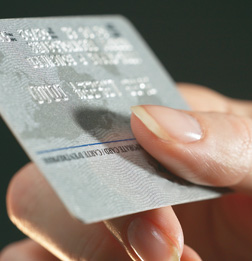Fraud was 20 per cent lower in the first three months of 2013 compared with the same period in 2012, with decreases seen in all the major types of fraud. So says CIFAS – a UK fraud prevention trade body, but it adds that the figures should be treated cautiously as numerous contributory factors may be at work.
Identity fraud still accounted for the majority of all fraud, at 52pc of all fraud recorded during the first quarter. Misuse of accounts by the genuine account holder, and the takeover of an account by a third party (frauds which frequently link to other organised criminal activity) remained the second and third most common types of fraud respectively.
After record levels of fraud were recorded in both 2011 and 2012, the 20pc decrease seen in the first quarter of 2013 (compared with the same period of 2012) can be seen as a positive development. This decline must be viewed cautiously, however, as overall patterns replicate many of the trends witnessed during 2012, with several challenges still facing consumers and organisations.
While the level of identity fraud (cases where the fraudster has impersonated an innocent victim or used completely fictitious identity details to obtain products and services) has decreased from the level seen during the first quarter of 2012, the scale remains daunting. 52pc of all fraud recorded during the first quarter of 2013 was identity fraud, with facility (or account) takeover fraud – where a fraudster hijacks the running of an existing account – comprising 14pc of all frauds recorded during that period . The total of the frauds related to the misuse of personal data therefore constituted 66pc of all frauds in 2013 so far, an increase from the 65pc seen for the whole of 2012.
Richard Hurley, CIFAS Communications Manager, says: “CIFAS has previously commented that organisations and individuals now exist in an age of data driven fraud. This signals a challenge to all parties – from consumers to financial institutions, government to police – to review the steps we all take to combat fraud and not simply to assume that security is ‘someone else’s responsibility’. While numbers may seem to be down for the moment, the continued prevalence of data driven identity related crimes must surely signal that much still remains to be done.”
Misuse of facility fraud (where a legitimately obtained account is used fraudulently – e.g. to receive stolen funds) also decreased during the first three months of the year but, like identity fraud and facility/account takeover, the presence of other organised criminality is a contributory factor. Richard Hurley says: “Whether it is allowing an account to be used to receive stolen funds, or trying to use stolen funds to settle bills, there are links between the fraudulent misuse of many accounts and the impersonation of innocent victims or the takeover of their accounts. Fraud is a crime that is frequently part of a larger, tangled web and the concept of organised criminals only being mafia style gangsters is long gone. However, many frauds will not be a part of a larger conspiracy, but will be committed by opportunists. The onus therefore is really upon law enforcement and organisations (both public and private) to educate people of the dangers and risks and also to help individuals to take decisive action to combat fraud.”
Richard Hurley adds: “Many factors will have contributed to the decrease in fraud recorded over the last quarter; from recent news stories featuring the latest scams targeting individuals (thus putting people on their guard) , through to improvements to some fraud prevention strategies used by organisations. As such, the fall in fraud levels is excellent news, but while patterns within the recorded fraud levels replicate those seen in recent years, the battle is far from won. There were still over 56,000 cases of fraud recorded to the CIFAS National Fraud Database between January and March 2013. Prevention will always be better than cure and, as these economically troublesome times continue, much fraud might still be escaping full investigation and identification. This recent decrease in the quarterly figures must therefore be viewed very cautiously as organisations, law enforcement and individuals still have much to do to keep themselves safe and protected.”










